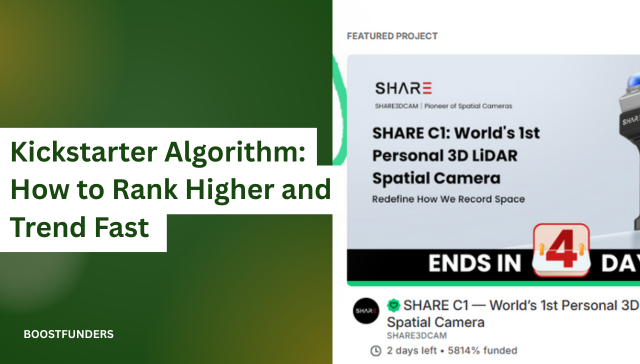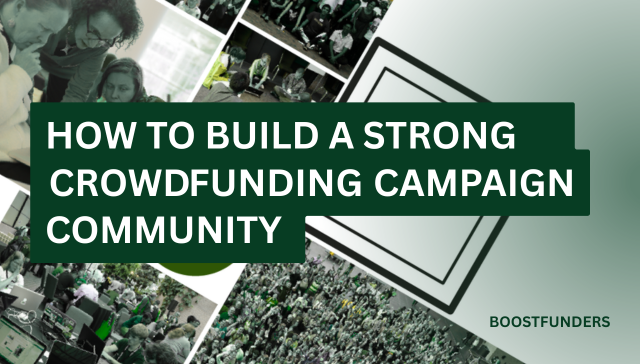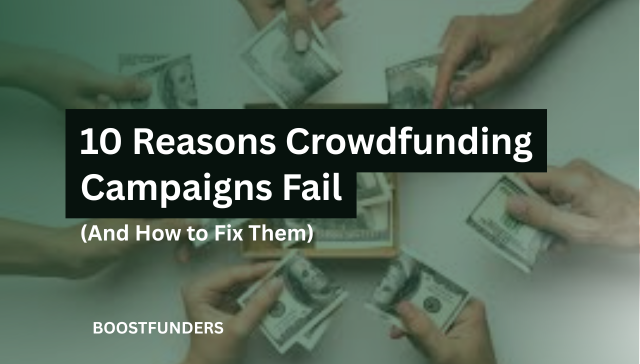How to Create a Successful Crowdfunding Campaign for a Nonprofit
 I hope you find this blog helpful as you plan your crowdfunding journey. If you’d like personalized support or expert guidance to help make your campaign a success, click here
I hope you find this blog helpful as you plan your crowdfunding journey. If you’d like personalized support or expert guidance to help make your campaign a success, click here
Author: Adebayo Ogungbemile | Founder of Boostfunders
Table of contents
-
- Why Crowdfunding Works for Nonprofits
- Define a Clear Purpose and Impact
- Choose the Right Crowdfunding Platform
- Set a Realistic Goal and Timeline
- Create a Compelling Story and Campaign Page
- Build a Pre-Launch Community
- Promote Your Campaign Strategically
- Keep Donors Engaged with Updates
- Post-Campaign: Deliver, Report, and Retain
- What is the best crowdfunding site for nonprofits?
- How much can a nonprofit raise with crowdfunding?
- Can nonprofits use Kickstarter?
- Do I need a video for my campaign?
- How do I get people to donate?
Why Crowdfunding Works for Nonprofits
Crowdfunding for nonprofits allows organizations to reach beyond their immediate network and engage a global audience. It creates an emotional connection between your cause and potential donors by telling a story, sharing a mission, and inviting the public to contribute to real-world impact. Unlike traditional grant writing, nonprofit crowdfunding campaigns can be launched quickly, with minimal costs and maximum reach.
Advantages of Crowdfunding
- Low Cost: Many crowdfunding platforms charge minimal fees, making it an affordable option for nonprofits. Such as Gofundme, it is always free to start raising funds on Gofundme, they only charge payment processing fees, there’s a transaction fee of 2.9% + $0.30 per donation.
- High Reach: With the ability to share campaigns across social media, nonprofits can connect with potential donors far beyond their immediate community.
- Storytelling Potential: Crowdfunding thrives on compelling narratives. Nonprofits can share their mission and impact in a way that resonates emotionally with potential donors.
Define a Clear Purpose and Impact
Every successful fundraising campaign for nonprofits starts with a clear and compelling purpose. Define:
- What you need the funds for (e.g., build a school, provide clean water, support a family in crisis)
- How much you need to raise and why
- What impact each donation will make (e.g $50 feeds a family for a week)
Donors want to understand how their money will be used and what change it will help create.
Choose the Right Crowdfunding Platform
Not all crowdfunding platforms are created equal. There are some platforms that are meant for charity & cause fundraising like GofundMe, while we have other platforms like Kickstarter, Indiegogo that are meant for a reward-based crowdfunding.
Consider these popular options for nonprofit crowdfunding:
GoFundMe: User-friendly, great for personal and nonprofit causes, no platform fee.
Kickstarter: Best for creative projects but less ideal for charity or cause-based campaigns.
Indiegogo: Offers flexible funding options and a wide audience.
Mightycause/Bonfire/Donorbox: Tailored to nonprofit fundraising with integrated donor management.
Choose a platform that aligns with your goals and makes donations easy.

Set a Realistic Goal and Timeline
Setting a clear funding goal is essential. Use a breakdown to explain how funds will be spent. Make the goal realistic based on your current network size and promotional ability. You’ll need to strike a balance between pushing your supporters to raise as much as possible and keeping the goal within their means.
Aiming for roughly 35% more than what you need can give your nonprofit a cushion in the event that you don’t accomplish your goal.
Once your overall goal is set, it’s important to establish suggested donation tiers. These tiers should appear on your donation form and be accessible to a wide range of supporters typically between $15 and $500. Adjust your tier structure based on the size and capacity of your donor base.
For instance, if you aim to raise $20,000 but only expect around 50 loyal donors, you would be asking each supporter to contribute $400, which might not be practical for everyone. Offering multiple giving levels makes it easier for more people to contribute.
The timeline should create a sense of urgency. Most successful nonprofit crowdfunding campaigns last between 30 and 60 days. Long enough to build momentum, but short enough to maintain excitement.
Check our other blog on how to build a community for a crowdfunding campaign
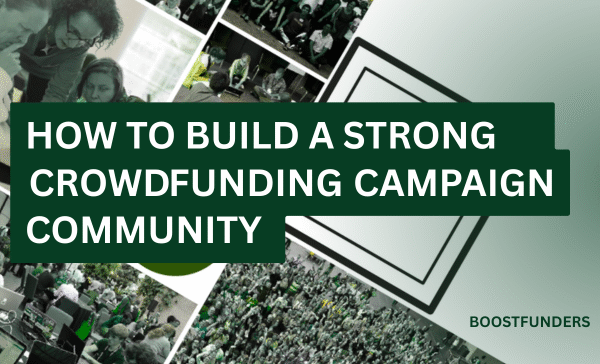
Promote Your Campaign Strategically
Nonprofit fundraising success depends heavily on promotion. Use a mix of:
- Social Media: Post consistently across Facebook, Instagram, LinkedIn, etc.
- Email Marketing: Weekly or bi-weekly updates to your list.
- PR & Outreach: Submit press releases to local news and niche publications.
- Paid Ads: Use Facebook or Google Ads to reach targeted donors.
- Influencers: Partner with micro-influencers who care about your cause.
The more visibility, the more donations. You can hire boostfunders for your campaign marketing.
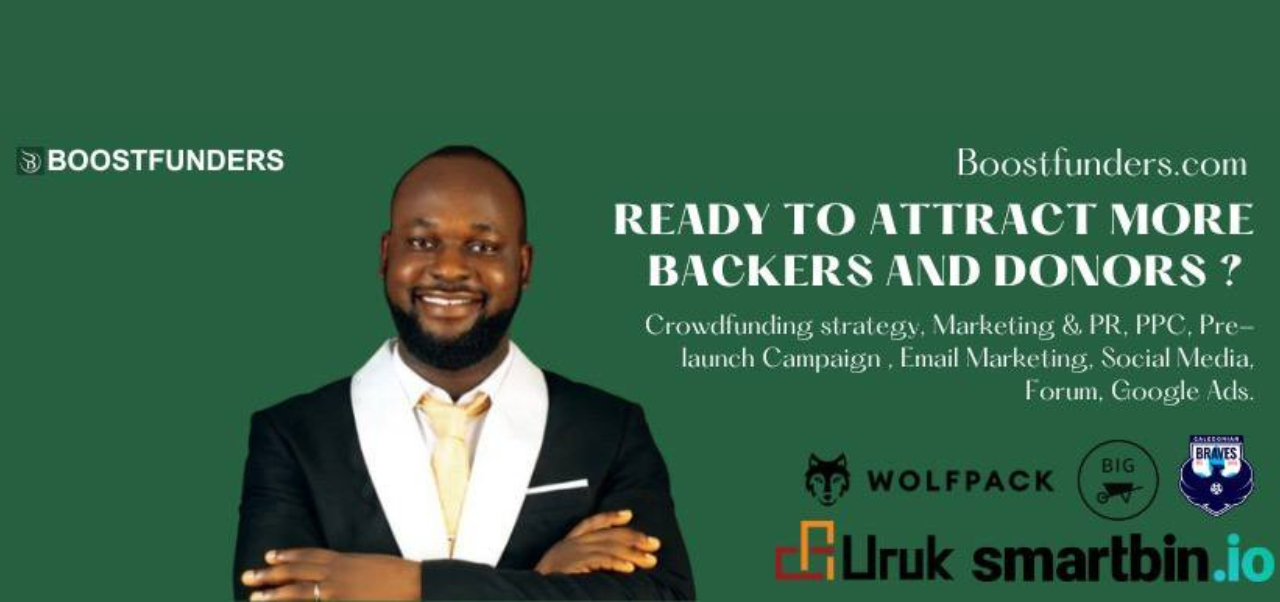
Keep Donors Engaged with Updates
Once donations start coming in, don’t go silent. Post regular updates to:
- Thank donors
- Share milestones (“We hit 50%!”)
- Show progress with photos or stories
- Create urgency near the end (“Only 48 hours left!”)
Donor communication builds trust and encourages repeat giving.
Post-Campaign: Deliver, Report, and Retain
After your campaign ends:
- Fulfill promises (rewards or impact reports)
- Send a thank-you email or video
- Share results and celebrate milestones
- Invite donors to stay connected
Turn one-time donors into long-term supporters for future fundraising campaigns.
Conclusion
Crowdfunding for nonprofits can be a great way to quickly raise funds for urgent projects. Creating a successful nonprofit crowdfunding campaign requires strategic planning, storytelling, community engagement, and consistent promotion. By defining your purpose, using the right platform, and maintaining communication, you can launch a campaign that not only meets its funding goal but also builds lasting support for your mission.
Recent Comments
Categories
- Business (2)
- Crowdfunding Strategy (7)
- Equity Crowdfunding Tips & Strategy (3)
- Fashion (2)
- LifeStyle (1)
- Movies (1)
- Restaurant (1)
- Technology (1)
FAQs
What is the best crowdfunding site for nonprofits?
GoFundMe is one of the most popular crowdfunding platforms for nonprofits due to its ease of use and donor-friendly experience. Platforms like Mightycause offer nonprofit-specific tools, while Indiegogo provides flexibility for mission-driven projects.
How much can a nonprofit raise with crowdfunding?
There is no fixed limit. Some nonprofits raise a few thousand dollars, while others exceed six figures. Results depend on storytelling strength, promotion strategy, donor trust, and community engagement.
Can nonprofits use Kickstarter?
Yes, nonprofits can use Kickstarter, but it works best for creative or project-based initiatives. For charitable causes and donations, platforms like GoFundMe or Mightycause are often more effective.
Do I need a video for my nonprofit crowdfunding campaign?
A video is not mandatory, but campaigns with videos typically raise significantly more. Videos help donors emotionally connect with the cause and understand the real-world impact of their contribution.
How do I get people to donate to my nonprofit campaign?
Focus on clear storytelling, highlight measurable impact, show transparency, and promote consistently across email, social media, and community networks.
How long should a nonprofit crowdfunding campaign run?
Most successful nonprofit crowdfunding campaigns run between 30 and 60 days. This timeframe creates urgency while allowing enough time for outreach and donor engagement.
Is crowdfunding taxable for nonprofits?
Donations received by registered nonprofits are generally not taxable. However, organizations should consult a tax professional to ensure compliance with local and federal regulations.
Can small nonprofits succeed with crowdfunding?
Yes. Small nonprofits often succeed because of close community relationships and personal engagement, which can outperform larger organizations with weaker donor connections.
Should nonprofits work with a crowdfunding agency?
Working with an experienced agency can help nonprofits refine messaging, improve campaign structure, and expand reach. Agencies like Boostfunders support nonprofits with strategy, content, and promotion.


